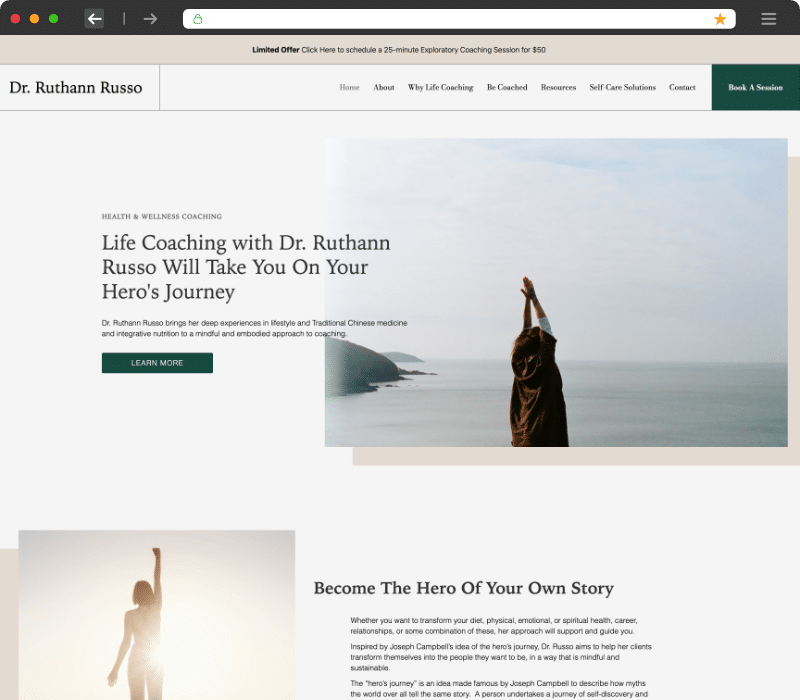Introduction
In the dynamic realm of digital marketing, where every click counts, mastering web design is non-negotiable. A well-crafted website can be your best asset in reducing bounce rates and boosting user engagement. As competition intensifies, businesses are compelled to create an exceptional online presence that not only attracts visitors but also converts them into loyal customers. So, what are the essential web design elements that can elevate your engagement metrics and lower those pesky bounce rates? This comprehensive guide delves into the intricacies of web design elements that fuel user interaction and a seamless browsing experience.
Web Design Elements that Boost Engagement and Reduce Bounce Rates
When it comes to crafting a website that resonates with users, several key elements come into play. These elements work synergistically to enhance the user's journey, making navigation intuitive while ensuring relevant content is front and center.
The Importance of User Experience (UX) in Web Design
User Experience (UX) is paramount in defining how visitors perceive your website. A positive UX engenders trust and encourages users to spend more time on your site.
- Intuitive Navigation: Ensure menus are straightforward, enabling users to find what they’re looking for quickly. Responsive Design: With mobile devices accounting for over half of global internet traffic, responsive design ensures your site looks great on any screen size. Minimal Loading Times: Fast-loading pages reduce frustration; research shows users abandon sites that take longer than three seconds to load.
Visual Hierarchy: Guiding Users Through Your Website
Creating a clear visual hierarchy helps direct attention to crucial information, enhancing user engagement.
- Use of Colors: Bold colors can draw attention to calls-to-action (CTAs), while subtle tones can calm the viewer's eye. Typography Matters: The choice of fonts affects readability. Ensure that text is legible across different devices and sizes. Image Placement: Strategically placed images or videos can break up text-heavy sections and keep users engaged longer.
Compelling Content: The Heartbeat of Web Design
Attracting visitors is just the beginning; engaging them with compelling content is essential for retaining their interest.
- Quality Over Quantity: Focus on delivering high-value content that addresses user needs. Incorporating Multimedia: Videos or infographics can convey complex information in an engaging format. Regular Updates: Fresh content signals that your site is active and relevant—both beneficial for SEO strategy.
Call-to-Actions (CTAs): Encouraging User Interactions
CTAs act as signposts guiding users toward desired actions—whether signing up for a newsletter or making a purchase.
- Visibility Is Key: CTAs should stand out without being intrusive. Consider their placement carefully. Enticing Language: Use action-oriented language like "Get Started," "Discover More," or "Exclusive Offer."
SEO Strategy: The Backbone of Web Design
An effective SEO strategy ensures that your beautifully designed website gets seen by the right audience.
1. Keyword Optimization
Integrate primary keywords naturally throughout your content. For instance, using phrases like "local SEO" or "Google Maps SEO" enhances visibility in search engine results.
2. Meta Tags & Descriptions
Crafting unique meta descriptions not only improves SEO performance but also entices clicks from search engine results pages (SERPs).
WordPress Web Design: A Platform for All Needs
WordPress remains one of the most popular platforms for web design due to its flexibility and user-friendliness.
1. Themes and Plugins
Utilizing well-designed themes and essential plugins can greatly enhance functionality without compromising aesthetics.
2. Security Features
Implement security measures such as SSL certificates to protect user data—an important factor in building trust with visitors.
Enhancing Local SEO through Web Design Elements
For businesses targeting local customers, local SEO strategies must be integrated directly into web design elements.
1. Google Maps Integration
Embedding Google Maps not only helps users locate you easily but also boosts local search rankings significantly.

2. NAP Consistency
Ensure Name, Address, Phone Number (NAP) consistency across all platforms to enhance credibility with search engines.
Leveraging Social Proof in Web Design
Showcasing testimonials and reviews can significantly boost credibility, making visitors more likely to engage with your offerings.
- Display customer reviews prominently on landing pages. Include case studies detailing successful projects or partnerships.
Visual Content: Engaging Users Through Imagery & Video
High-quality visuals play an integral role in captivating visitor attention while enhancing comprehension of your message.
1. Hero Images & Backgrounds
Radiant Elephant web design and development companyA striking hero image immediately captures attention upon landing on a webpage—think bold colors or captivating photography linked to your brand’s ethos!
2. Video Backgrounds
Using video backgrounds judiciously can provide depth to storytelling while keeping users captivated for longer durations than static images alone would allow.
Creating Trust Signals on Your Website
Trust signals such as certifications, awards, privacy policies, and secure payment options reassure visitors about their safety when interacting with your site—it’s crucial for reducing bounce rates!
1. Privacy Policy Pages
Clearly stating how user data will be used fosters transparency—a fundamental aspect of building trust online!

2. Secure Payment Options
Offering multiple secure payment methods demonstrates reliability; consider integrating trusted gateways like PayPal or Stripe for added peace of mind!
FAQ Section
What are the key web design elements that affect engagement?
Key elements include digital marketing intuitive navigation, responsive design, compelling content, visually appealing layouts, strategic use of CTAs, optimized loading times, and effective use of multimedia like images and videos.
How does SEO impact web design?
SEO impacts web design by influencing how content is structured—effective keyword usage helps improve visibility on search engines while ensuring designs remain user-friendly enhances overall engagement levels!
Why is responsive design important?
Responsive design ensures a consistent experience across all devices—from desktops to tablets—and smartphones! It significantly reduces bounce rates since mobile users find it easier to navigate sites tailored specifically for their screens!
How do CTAs influence conversions?
Effective CTAs guide users towards specific actions—such as signing up or purchasing! By employing attractive designs coupled with persuasive language alongside strategic placements throughout your site—they encourage higher conversion rates!

Can multimedia affect bounce rates?
Absolutely! Engaging multimedia elements like videos or infographics capture attention better than plain text alone! They keep visitors engaged longer which naturally reduces overall bounce rates on websites!
What role does local SEO play in web design?
Local SEO integrates specific strategies aimed at improving visibility within localized searches! Incorporating features such as Google Maps integration enhances discoverability while optimizing site structures contributes positively towards attracting local traffic!
Conclusion
Investing time into understanding and implementing these essential web design elements will undoubtedly yield positive outcomes for both engagement levels and bounce rates alike! From focusing on creating intuitive navigation systems through emphasizing quality content delivery—there’s much ground we’ve covered today regarding maximizing digital marketing strategies through effective website development techniques! By continuously analyzing performance metrics alongside refining existing designs—you’ll pave the way towards achieving greater success within this competitive landscape!